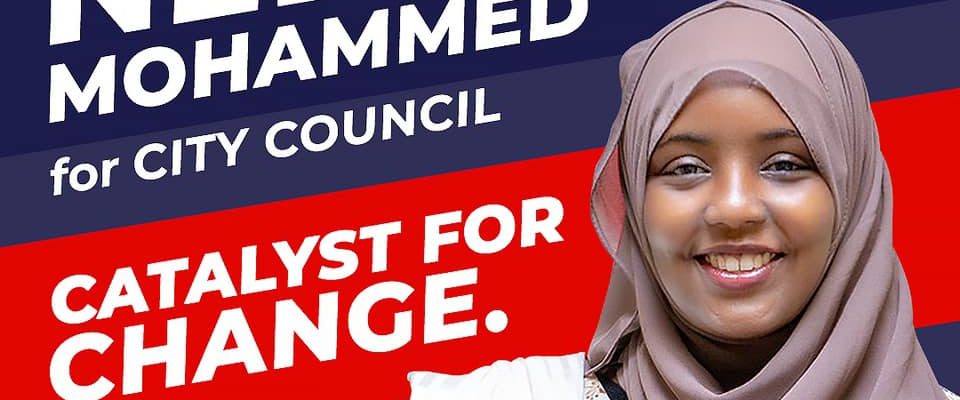Minneapolis sixth ward special election: How ranked choice voting works

Minneapolis sixth ward special election: How ranked choice voting works
Minneapolis first adopted ranked choice voting, a largely unfamiliar and controversial system, for the 2009 city election. It has been used to elect officials in 22 city offices including park board, mayor, and city council positions.
Despite being over a decade old, RCV has created a cascade of confusion among voters and candidates alike. Advocates of RCV argue that it promotes civility, creates a diverse representation, and reduces negative campaigning.
Yet many voters find the unfamiliar system largely intimidating because they’ve never used it before. This ‘new’ voting system has been a source of much confusion for immigrant voters who have been voting for just one candidate their whole life.
RCV works by allowing voters to rank multiple candidates in order of preference. It upholds the principle of majority rules. However, opponents of the new system are creating confusion by arguing that it doesn’t.
A special election in Minneapolis has been called to fill a vacancy in the Council – Ward 6 seat after Abdi Warsame resigned from his position. Ward Six is relatively small in comparison to other wards in the city, comprising only 6 neighborhoods, see the full map here. However, it is being hotly contested this year by 11 candidates running for the recently vacated seat.
A virtual candidate forum involving the 11 candidates is being hosted on July 16 by Mshale. It will be live streamed on Facebook and YouTube.

More than half of the candidates are Somali-Americans. Most voters are confused because the ballot has many tables. This is why non-profit groups like FairVote Minnesota are working hard to raise more awareness among candidates and voters about the importance of ranked choice voting. Council Member Nadia Mohamed, an organizer of the FairVote community, believes that residents need to learn more about the new system.
Due to the influx of candidates of Somali descent, some senior community leaders will be looking on at the contests with concerns of potentially losing the only seat they have in the Minneapolis City Council.
Advocates like Mohamed, an elected official of Somali descent, argues that RCV is a smarter way to fix the political system and represent immigrant communities in government offices.
“It is really important for the immigrant community to participate in ranked choice voting because it allows them to have more choices,” said Mohamed. “So often immigrants’ voices aren’t heard, and they aren’t represented in the government. So, when they choose three candidates, they are more likely to get representation.”
Although RCV is an effective way to uphold the principle of majority rules, many candidates are concerned they may lose despite having more votes. Many still believe that there is a chance for second-ranked candidates to beat the one with the most votes. “With RCV, it is not possible for a candidate to win with only 2nd-choice votes even if all voters rank that candidate 2nd”, Mohamed said.
“So do not ask voters to vote for only you – that won’t be of help and could hurt your chances. Some candidates erroneously believe that a 2nd and 3rd choice might somehow hamper their chances.” Mohamed said. “It doesn’t. The 2nd choice is only counted when a voter’s 1st choice is eliminated.”
FairVote, which is a nonpartisan and nonprofit grassroots foundation, has been one of the most vocal supporters of rank choice voting and has extensively trained Ward Six candidates to create more awareness about RCV.
It is important for voters to understand how RCV works. This will increase their chances of selecting their most preferred candidate in an election and eliminate their least preferred candidate.
Mohamed explains how it works. “People vote by ranking candidates by placing them in order of preference: First, Second, and Third. A voter’s second choice will only count if their first choice is eliminated. A voter’s third choice will only count if their first and second choices are unsuccessful.”
When implemented correctly, RCV categorizes the most popular candidates from the ones with the least votes.
Mohamed’s message to candidates is to embrace RCV and not create further confusion among their voter base. “If you urge your voters to not rank other candidates, then backers of your opponents may decide to not rank you as their backup choice either,” warns Mohamed. Candidates are only hurting their own chances by discouraging voters from ranking for other candidates.
She encouraged voters to leverage RCV to its full potential, “Please use your full voice and power to rank your candidates, she said. “Don’t let anyone convince you that you are only allowed to vote for them.”
Mail-in Voting
Minneapolis election officials are encouraging voters to request a ballot and vote by mail due to the COVID-19 pandemic.
Apply to get a ballot in the mail
After you apply, we will mail your ballot to you with a postage-paid envelope for return.
Apply online
The online ballot application for the August primary and November general election is available now.
Application deadline
We recommend you apply for a ballot no later than 10 days before Election Day. This gives you the best chance to get your ballot in the mail and still have time to mail it back or drop-it off.
You can apply after this date, but each day increases the chances you will not be able to receive and return your ballot by the deadline.
Apply by mail, fax or email.
Fill out this application for a ballot and return it by mail, in-person, fax or email.
Mail or in-person: Minneapolis Elections & Voter Services, 980 E Hennepin Ave, Minneapolis, MN 55414
Email: minneapolisabsentee@minneapolismn.gov
Fax: 612-673-2756
source mshale
Comments are closed